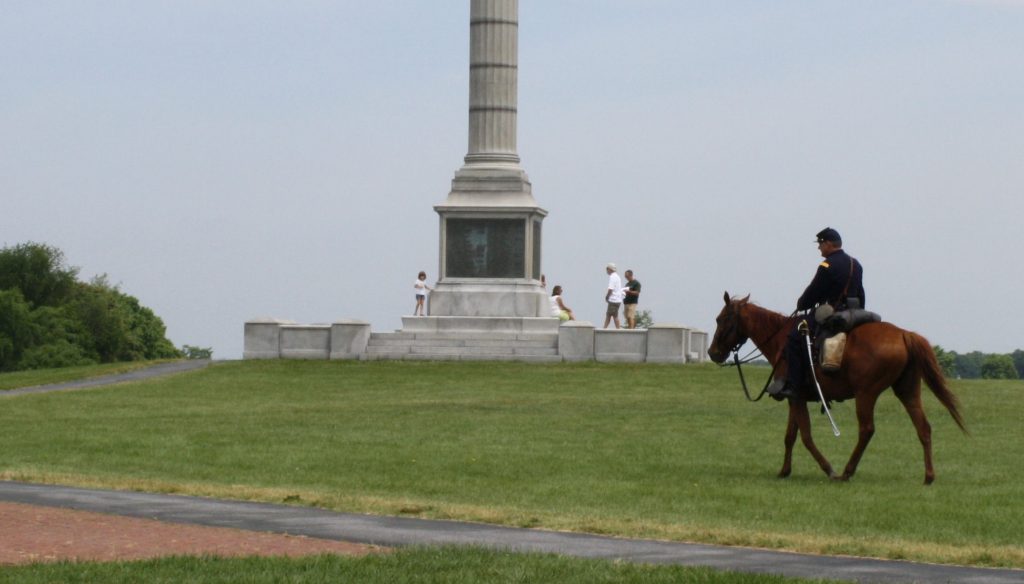
Antietam was the battle that gave Abraham Lincoln the cover to sign the Emancipation Proclamation. Without at a significant victory in the field, he reasoned, such a bold proclamation would just seem hollow. The Proclamation changed the character of the war. After it became a struggle to end slavery, the threat of British or French intervention on the side of the Confederacy was removed.
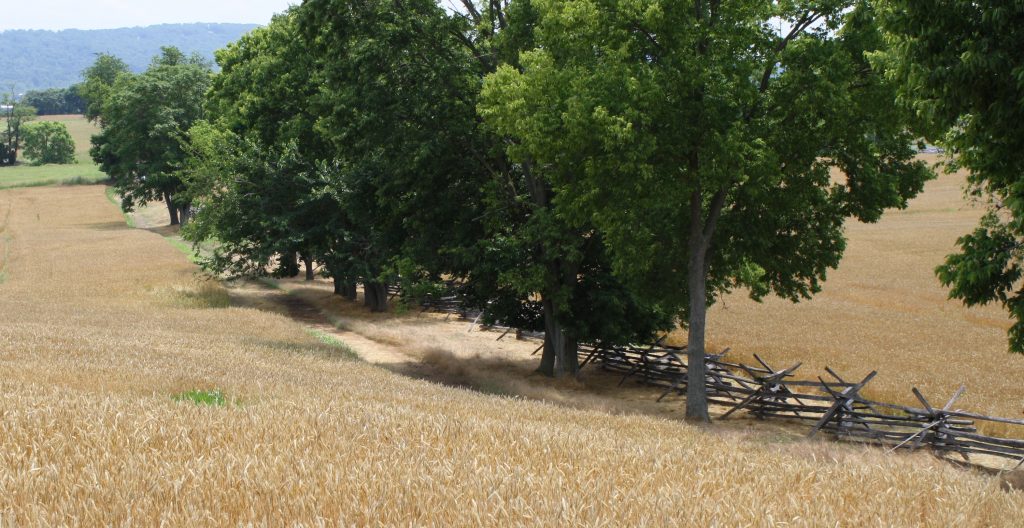
Historians have argued about who did what right and wrong. Some believe that Union commander George McClellan could have destroyed Robert E. Lee’s army had he acted more aggressively. The battle at Antietam was really not much of a victory. Both sides got badly mauled. But at the end of the day, the Army of the Potomac still held the ground, Robert E. Lee was limping back to Virginia and 23,000 Americans were casualties in the bloodiest day in American history.
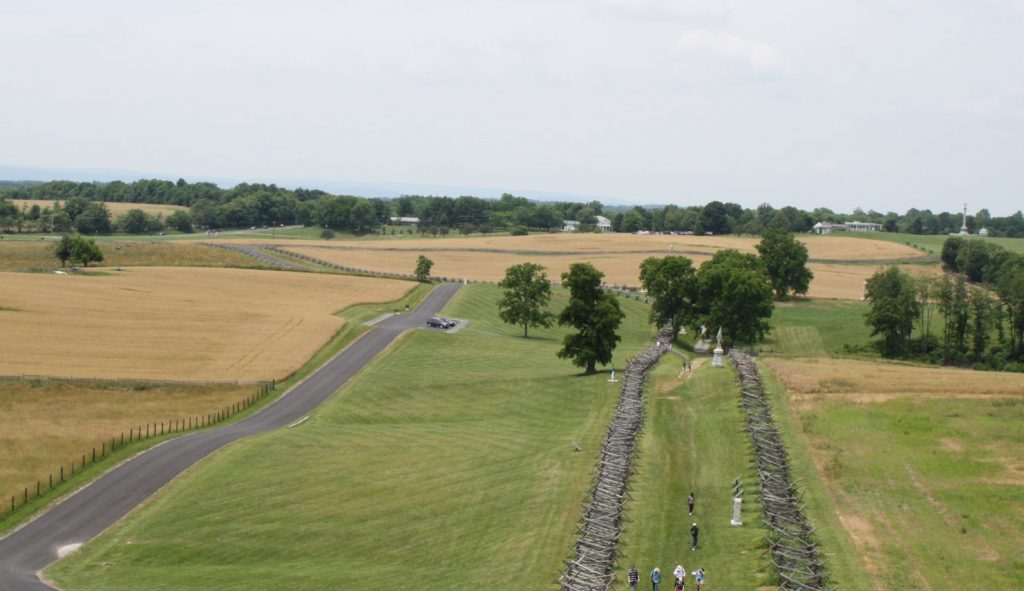
The Civil War is the American Iliad. It features heroes with strong characters and personal stories. Many of the participants knew each other and they faced off repeatedly on different battlefields. I think that it is the personalization that has so fascinated Americans for nearly a century and a half. Historians can study diaries and journals; re-enactors can find enough information to “become” individuals.

The re-enactors are important to history. They maintain a living link past and their attention to detail gives historians a treasury of data. The re-enactors actually wear the clothes, use the gear and carry the weapons. They can help explain the capacities and challenges of those who struggled.
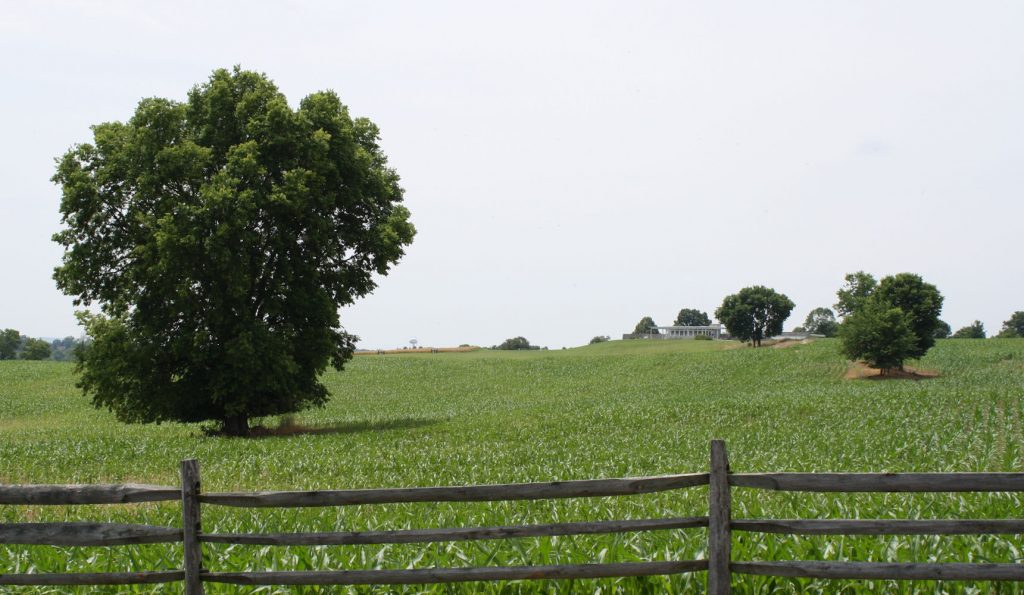
Espen & I made the trip today. I wanted to spend some individual time with him before I go to Brazil next week. We had a good chance to talk on the drive and during the walk around the battlefield. I have been to Antietam many times, starting before Espen was born, but it is better with him along. It was a humid and a hazy day, as you can see from the pictures.

Some battlefields, such as Manassas, have suffered from suburban encroachment. Antietam has not changed since I first came here in 1985. It is still rural in all directions. The Park Service tries to maintain the landscape more-or-less as it was in 1862. They plant corn in the corn fields of the time and try to keep the woods in woods. Nevertheless, it is hard to visualize the battle both because it happened over a fairly large space but also because the battle itself was confusing. Both sides fed more troops in to support their advancing or defending positions w/o much coherence. At the very end of the day, just when it looked like Robert E. Lee’s line was breaking, AP Hill showed up from Harpers Ferry making the battle inconclusive.

The pictures: Up top is a re-enactor riding past a monument to New York troops. Recall that the states fought as separate units, so there is no U.S. monument. Next is the path to bloody lane, where 2200 Rebs held off 10,000 Union troops, until their position collapsed. It is called bloody lane because the bodies were literally piled up there. The picture after that shows the lane. The pictures after that show a re-enactor camp, corn field and the Burnside bridge respectively. Just above is me on the bridge. There are lots of big sycamores near the creek. And below is Espen with a re-enactor playing a Confederate captain from Virginia. The re-enactors wear the same wool uniforms that the real guys did in 1862. On that hot and humid day, it was more uncomfortable than usual. The blue at his sleeve shows that he is infantry. Artillery had red and cavalry yellow.
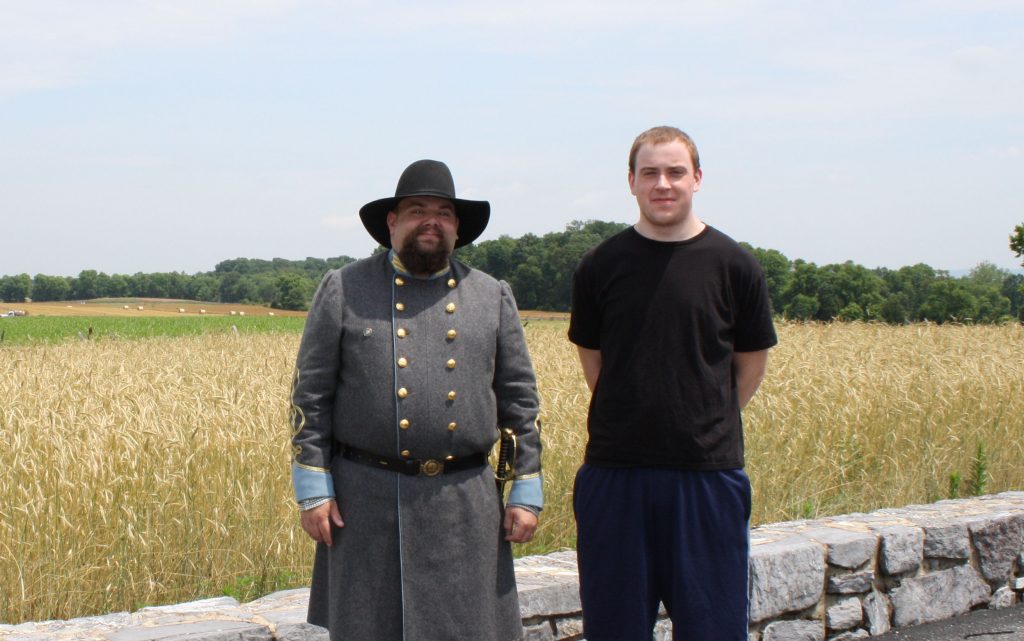
Below is me buying a watermelon and some sweet corn from a farmer stand.

